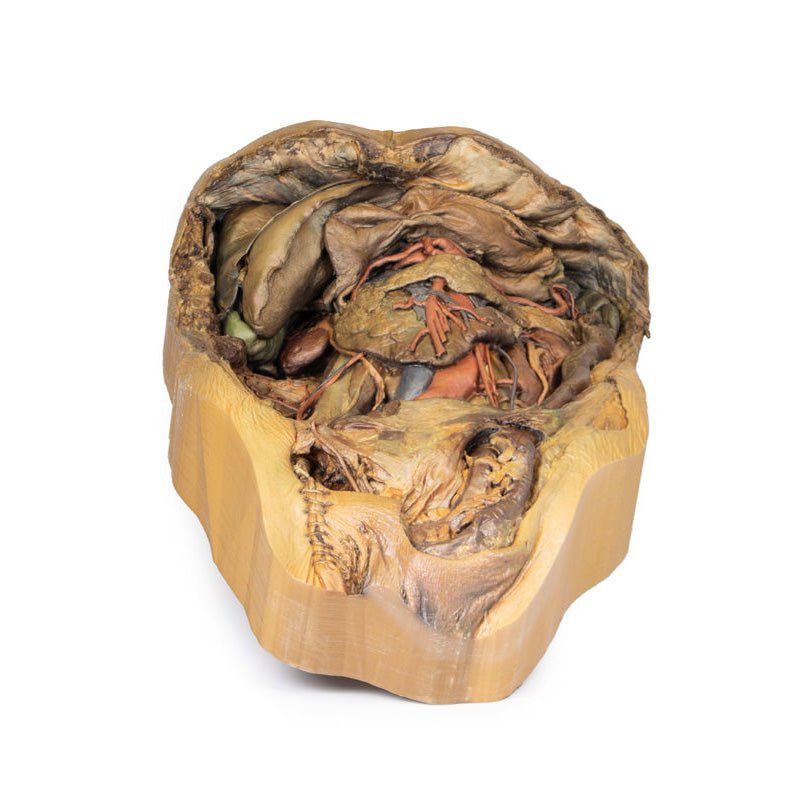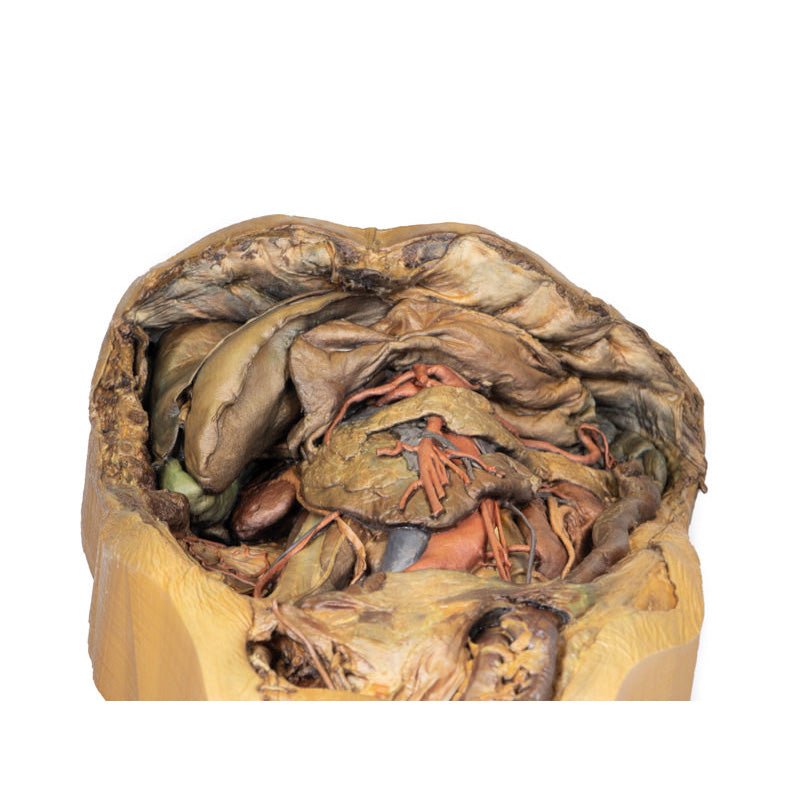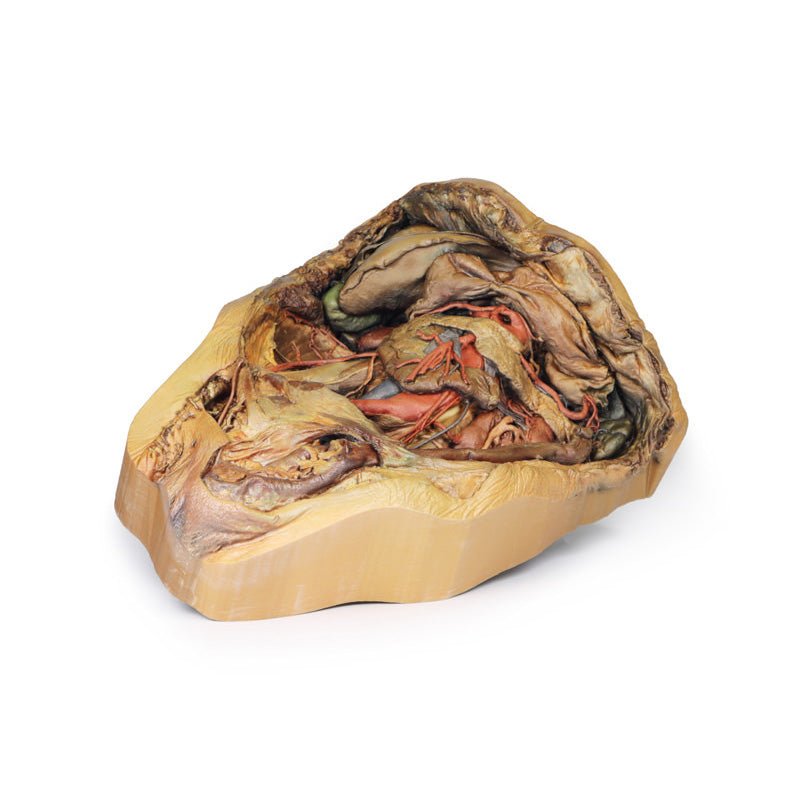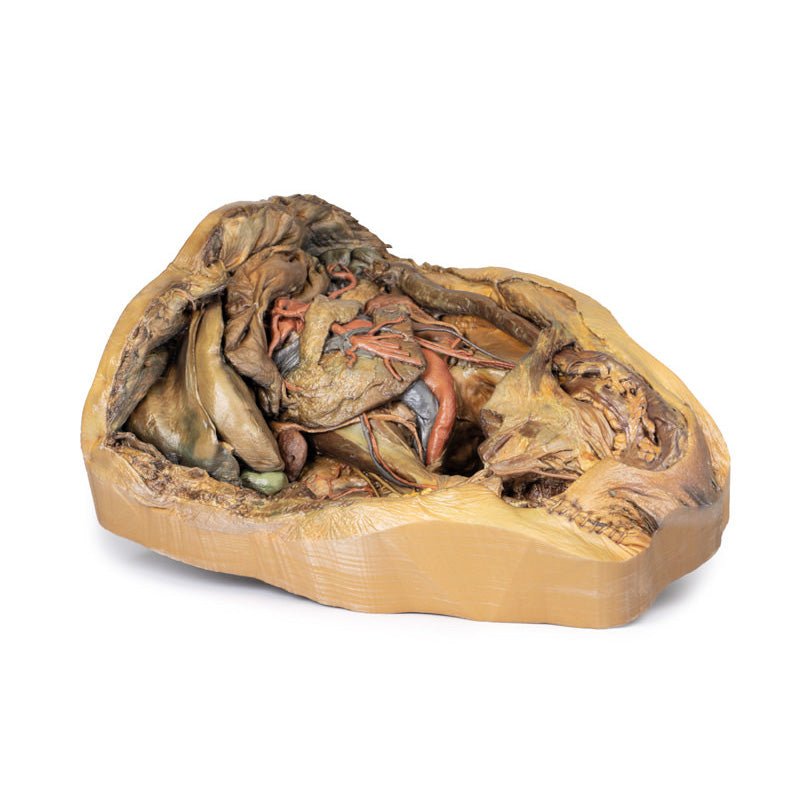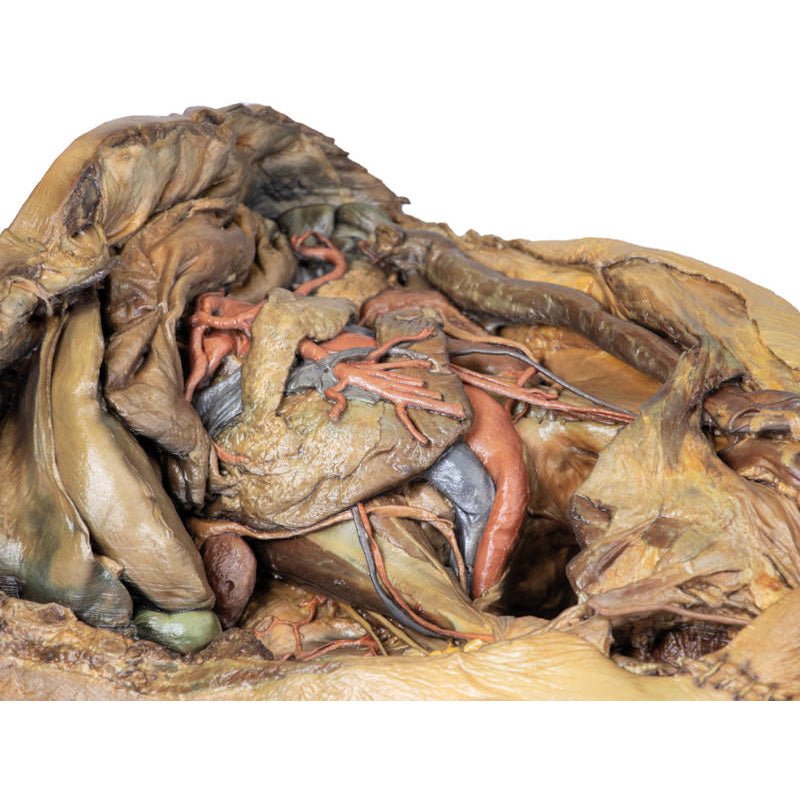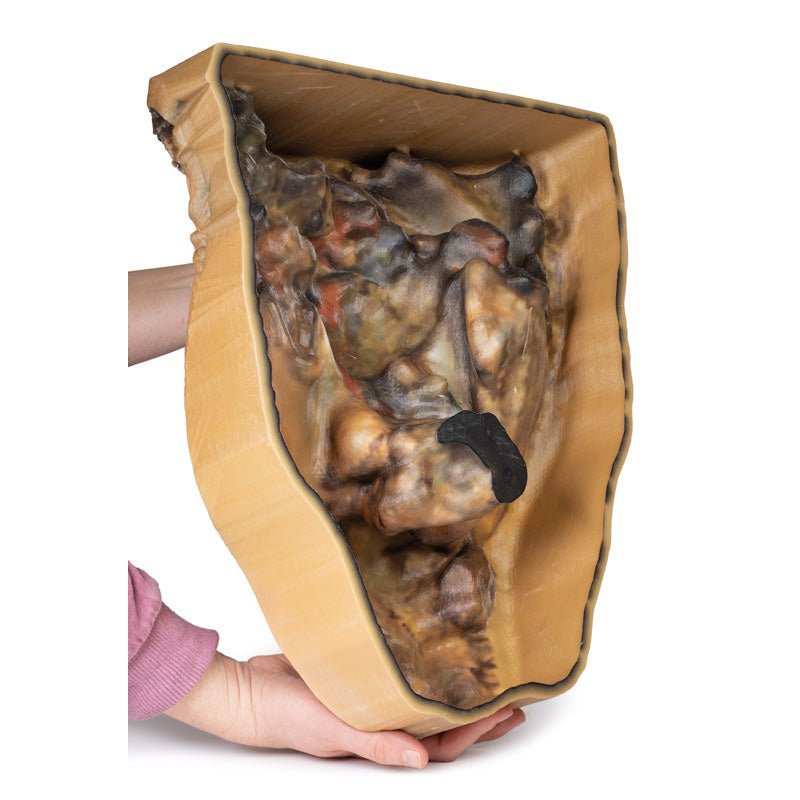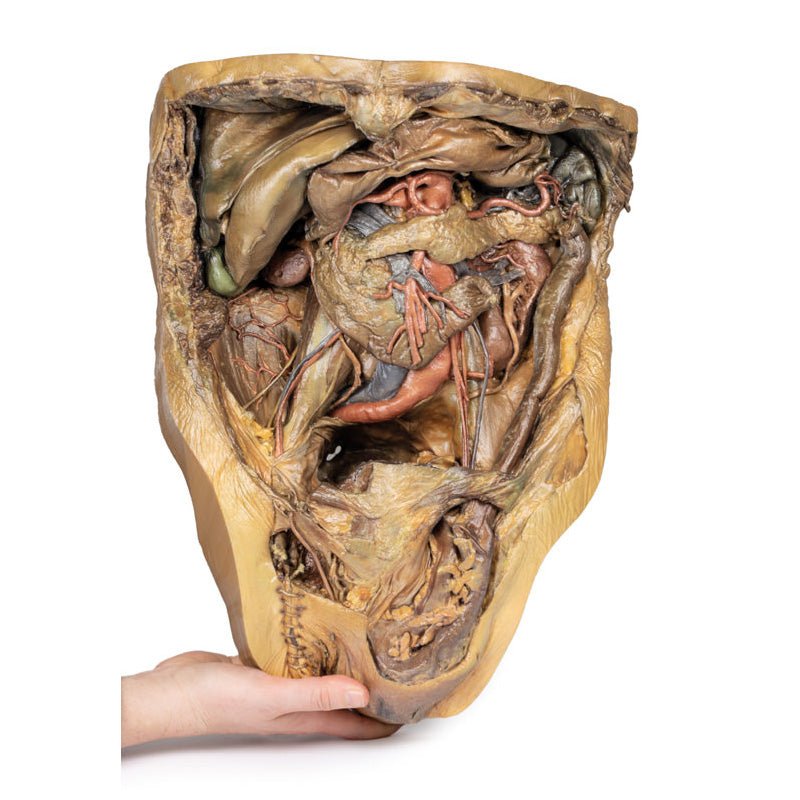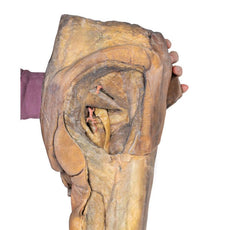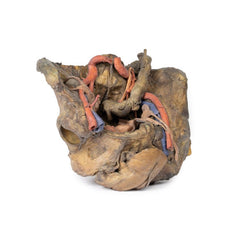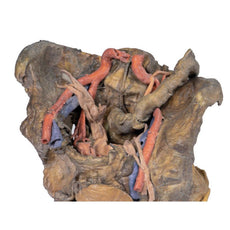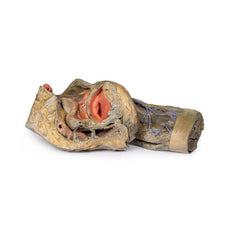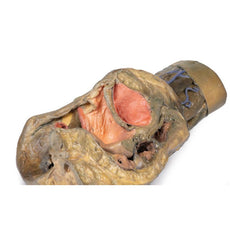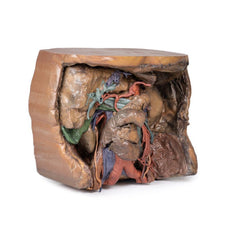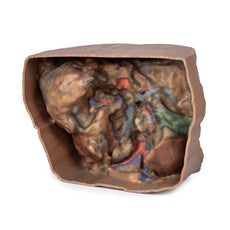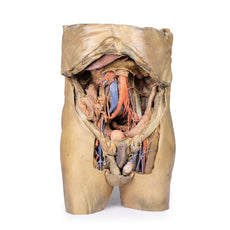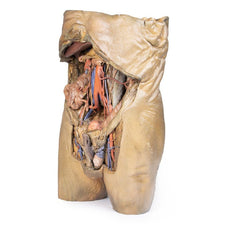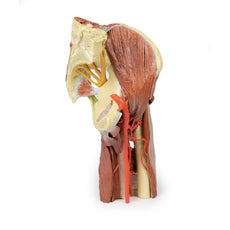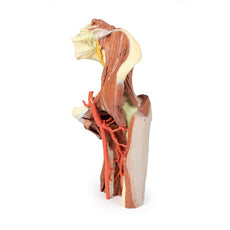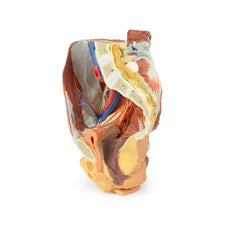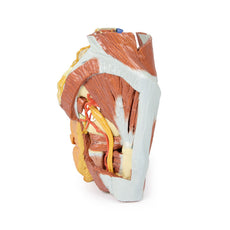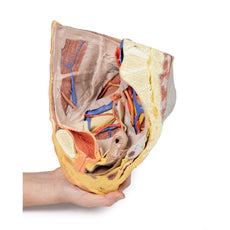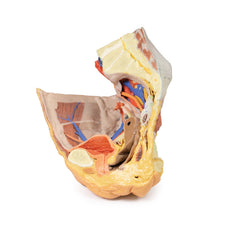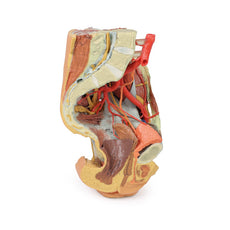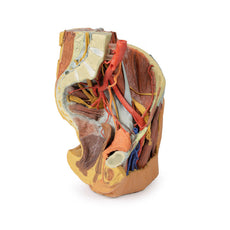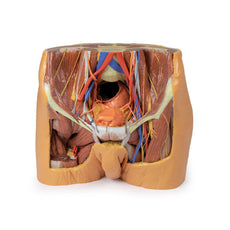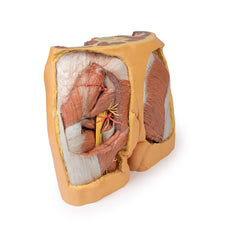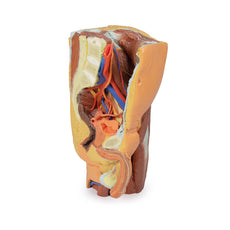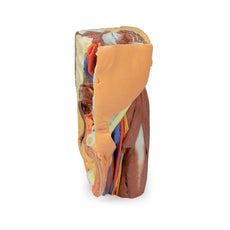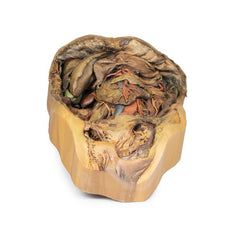Your shopping cart is empty.
3D Printed Abdomen with Inguinal Hernia
Item # MP1133Need an estimate?
Click Add To Quote

-
by
A trusted GT partner -
FREE Shipping
U.S. Contiguous States Only -
3D Printed Model
from a real specimen -
Gov't pricing
Available upon request
3D Printed Abdomen with Inguinal Hernia
Diaphragm and Xyphoid Process
The diaphragm has been secured to the superior border of the
dissected specimen with sutures to ensure an unobstructed view of the abdomen. The xyphoid process is in the
middle of this sutured border.
Liver and Gallbladder
The liver in the right hypochondrium has been pushed laterally to
reveal the kidney posterior to it.
The falciform ligament divides the right and left anatomical lobes of the
liver and enveloping ligamentum teres, which is a remnant of the umbilical vein which is present during foetal
development.
Below ligamentum teres at the inferior border of the liver in this model, the gall bladder is
sandwiched between the anatomical lobes of the liver.
Stomach and Splenic Vasculature
The deflated stomach has been deflected superiorly to reveal
the splenic artery and vein.
The tortuous course of the splenic artery and vein can be observed as it
approaches the spleen, giving off numerous branches which enter the hilum of the spleen.
Spleen and Pancreas
The spleen is in the left hypochondrium of the specimen. Its gastric
impression indicates where the greater curvature of the stomach would normally sit.
Toward the inferior pole
of the spleen, the tail of the pancreas is fused to the hilum of the spleen. Unlike the remainder of the organ,
the tail of the pancreas is intraperitoneal.
Kidneys
The kidneys are primarily retroperitoneal, however in this specimen the peritoneum
that usually covers these organs has been removed.
Normally, the right kidney is displaced inferiorly by the
liver relative to the than the left kidney. However, in this specimen the right kidney is both higher and
smaller than the left.
The left kidney is abnormally large and is supplied by two accessory renal arteries
which arise directly from the abdominal aorta. These connect just superior to the hilum and also to the inferior
pole of the kidney.
Adrenal Glands
The left adrenal gland is detached from its usual position on the superior
pole of the kidney. The middle adrenal artery originates directly from the aorta, left of the coeliac trunk,
whilst the inferior adrenal artery is derived from the left renal artery: both supply the adrenal gland. The
superior adrenal artery has been obscured by connective tissue.
Rectum and Bladder
Although the majority of the peritoneum in the abdomen has been removed
below the level of the sacral prominence (S1), a layer of peritoneum remains intact, which overlays the rectum
and bladder. Notably this the first part of the rectum, which is intraperitoneal.
Gastrointestinal Tract
The final part of the ascending duodenum and the descending colon at
the left colic flexure has been ligated with twine, with the intestine in between being removed in order to
provide a better view of the abdomen.
Pelvic Region
In this specimen the sigmoid colon has indirectly herniated through the
inguinal canal.
On the right, the vas deferens emerges from the superficial inguinal ring and coursing
towards the right of the scrotum to eventually attach to the right testicle. The remainder of the contents of
the right spermatic cord have been removed from this specimen.
The sutures observed inferior to the vas
deferens are remnants from the embalming process. These indicate that the right femoral artery was used as the
point of entry.
Abdominal Vasculature
The coeliac trunk can be seen just inferior to the reflected
stomach.
Typically, the coeliac trunk has three main branches; left gastric, splenic and common hepatic, to
supply the foregut.
However, in this 3D model, the coeliac trunk gives off both right and left gastric branches, the splenic artery
and a gastroduodenal branch that splits to become two superior pancreaticoduodenal arteries. The proper hepatic
artery emerges directly from the abdominal aorta, independent of the aforementioned branches, and gives rise to
the right inferior phrenic artery.
The iliolumbar artery can be seen emerging deep to the right psoas,
anastomosing with branches of the right deep circumflex iliac artery which courses along the iliac crest.
 Handling Guidelines for 3D Printed Models
Handling Guidelines for 3D Printed Models
GTSimulators by Global Technologies
Erler Zimmer Authorized Dealer
The models are very detailed and delicate. With normal production machines you cannot realize such details like shown in these models.
The printer used is a color-plastic printer. This is the most suitable printer for these models.
The plastic material is already the best and most suitable material for these prints. (The other option would be a kind of gypsum, but this is way more fragile. You even cannot get them out of the printer without breaking them).The huge advantage of the prints is that they are very realistic as the data is coming from real human specimen. Nothing is shaped or stylized.
The users have to handle these prints with utmost care. They are not made for touching or bending any thin nerves, arteries, vessels etc. The 3D printed models should sit on a table and just rotated at the table.




